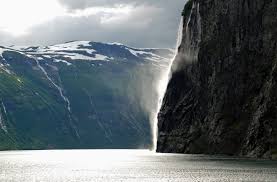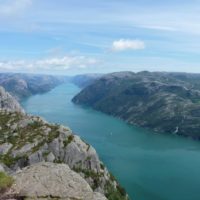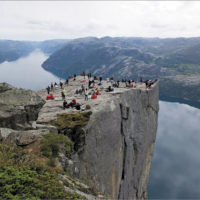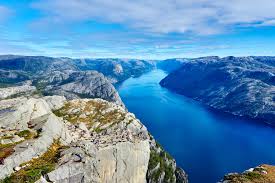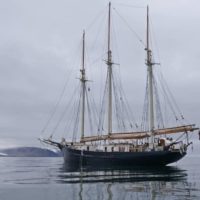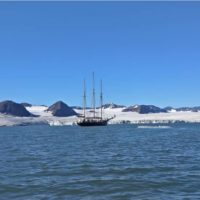The Norwegian Fjords Adventure
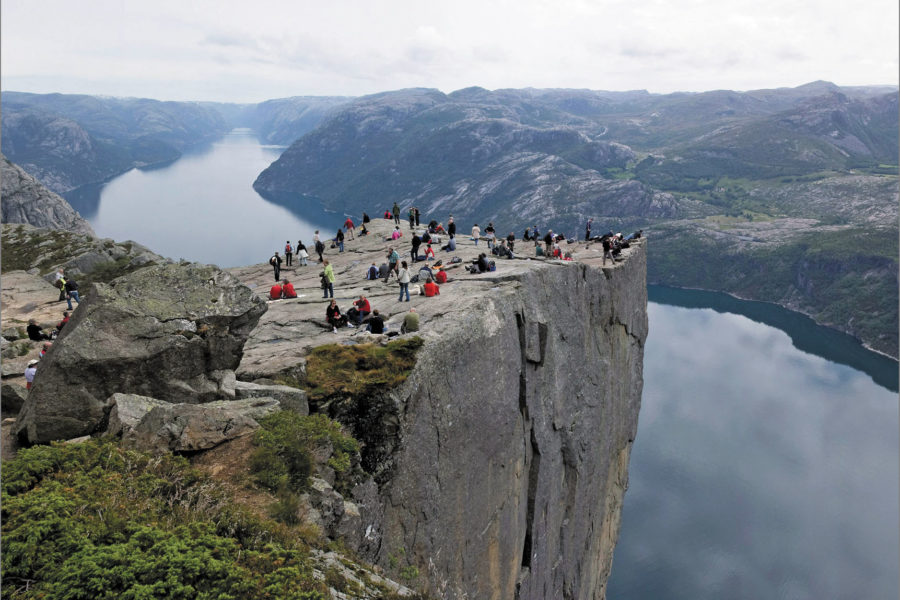
Stavanger, Norway - Stavanger, Norway
Step aboard Blue Clipper for a 12 day adventure, exploring some of the most spectacular fjords in Norway. The Stavanger & Ryfylke region are filled with grand nature with steep mountains and deep fjords. From outer reefs to sheltered villages. From steep vantage points to green valleys. Wide-stretched beaches as far as the eye can see. Colourful culture and spectacular culinary highlights.
| Ship | Per Person Twin En-Suite |
|---|---|
| Blue Clipper | £1,120.00 |
| Embarkation | Disembarkation | Nights |
|---|---|---|
| August 19, 2019 | August 31, 2019 | 12 |
The Norwegian Fjords Adventure. Stavanger, - Stavanger
19th August 2019 - 31st August 2019
Voyage Highlights
- Visit the towering cliff of Preikstolen (Pulpit Rock)
- Hiking up the Kjerag mountain
- Sailing the crystal clear waters of the fjords
- Exploring Stavanger
- A taste of Norwegian philosophy and culture
Life on a sailing voyage
On a sailing voyage we never use the word itinerary, as skippers will always be aiming for the best sailing and shore landings for the forecast and most idyllic or sheltered anchors and ports. They are as keen as you to include some of the highlights describe, but you have to go with Mother Nature, not fight her. The description below is based on what we think might be possible, based on past trips, or experience, but nothing is guaranteed on a sailing voyage. If the following voyage description is not fulfilled for any reason, Maybe Sailing and Maybe Sailing Youth Initiative cannot be held responsible.
The Stavanger & Ryfylke regions
Grand nature with steep mountains and deep fjords. From outer reefs to sheltered villages. From steep vantage points to green valleys. Short distances to mountains and fjords. Wide-stretched beaches as far as the eye can see. Colourful culture and spectacular culinary highlights.
Norwegian philosophy
Norway is a country of outstanding natural beauty. Preserving this landscape, its communities, and the way of life, is essential for locals and visitors alike. Norwegian philosophy is very much that conservation is everyone’s responsibility. The locals try to leave as small a footprint as possible. Leave it as you would like to find it is the mantra, regardless of where you are. It is all about the quality of life. Not only now, but for the time to come as well.
The Fjords
There are more than a thousand fjords in Norway, all along the coast. The fjords resemble still blue lakes,but consist of saltwater – they are prolonged arms of the seas, often reaching deep inland with majestic cliffs towering above on both sides.
Even though the fjords are often intertwined and you can sail from one fjord to another or back into the sea, visiting the fjords can make you feel like you are in a secluded universe.
However, the key to understanding why the fjords are perhaps the most important symbol of Norway – and amongst the country’s most popular attractions – lies in what they represent.
More than anything the fjords and the surrounding areas evoke images of a Norway of the past: A time when people lived as farmers in impossibly steep and rocky surroundings (in certain places they still do). A time when you could harvest from the blossoming fruit trees, and a sheep’s head was considered a delicacy (it still is).
This voyage will spend time in the Hogsforden, Frafjorden and Lysefjorden.
Hogsfjorden and Frafjorden
Høgsfjorden is a fjord in Rogaland county, Norway. The innermost part of the fjord is located at the village of Frafjord in the municipality of Gjesdal. It flows west to Dirdal and then heads northwards. At the village of Forsand, the Lysefjord branches off to the northeast. The Høgsfjorden continues to the northwest past the islands of Idsal and Idse before emptying into the Horgefjorden (just east of the city of Stavanger) and ultimately into the vast Boknafjorden. The fjord runs through the municipalities of Gjesdal, Forsand, Sandnes, and Strand.
The 23-kilometre (14 mi) long fjord is about 1,500 metres (4,900 ft) wide and has a maximum depth of 170 metres (560 ft). The innermost part of the fjord from Dirdal to Frafjord is also known as the Frafjorden. The Frafjorden has steep sides with no habitation along its shores, except for the village of Frafjord at the innermost part of the fjord.
The village and the surrounding Frafjorddalen farming valley stretches about 5 kilometres (3.1 mi) east of the fjord and the whole area has about 100 residents. There are also many holiday cottages on top of the high mountain located south of the village of Frafjord.
Lysefjorden
This is where we will spend the majority of the voyage, with a number of opportunities for activities on shore. Visit the towering cliff of Preikstolen (Pulpit Rock), located above the fjord with a vertical drop of 604 metres. This is a world famous viewpoint, a naturally square-shaped mountain plateau of 25 x 25 metres. At the end of the Fjord lies the 1110 metre tall Kjerag mountain, a popular hiking destination with the famous boulder, Kjeragbotten. This is a giant stone trapped in a crevice, great for those unique photos to remember your adventure! Finally there is the 4,444 steps of the wooden staircase of Florli, climbing 740 metres above the fjord.
Stavanger
There’s a reason this coastal town has been twinned with Houston and Aberdeen: it’s sometimes known as Norway’s ‘Oil City’ for its importance in oil exploration in the North Sea since the 1970s (Norway’s largest oil company, Statoil, is based here). But while much of the outskirts are modern, you won’t find too many skyscrapers – Stavanger’s old centre has some of the most beautiful and best-preserved wooden buildings anywhere in Norway, many dating back to the 18th century. It’s all very pretty, and in summer the waterfront comes alive in the best port-town style.
What is included in the voyage cost:
- All meals on board Blue Clipper – including daily breakfast, lunch and evening meal
- Refreshments throughout the day
- Use of safety equipment
- Accommodation in a twin en suite cabin
- All instruction and lectures on board by fully qualified crew
What is not included:
- Travel to and from the boat
- Personal travel insurance. Check out Top Sail for specialist Tall Ship sailing travel insurance
- Alcoholic and soft drinks
- Any shore excursions and meals on shore (unless otherwise stated)
- VISA fees
Stavanger, Norway
Embark Travel Information
Stavanger, Norway
How to get to Stavanger, Norway
By Air
Stavanger international airport, Sola, with its more than 60 destinations makes it easy to go by plane to and from the region.
By Train
Regional trains from Oslo and Kristiansand to Stavanger are an economical and comfortable way of travelling, where you at the same time enjoy fantastic natural landscapes such as forests, mountains and the open landscapes of Jæren. NSB takes you all the way into the centre of Stavanger.
By Car and Ferry
E39 takes you efficiently to the region. If you arrive by car from other countries in Europe, you can go by car ferry from Denmark to Kristiansand, or by car ferry from Denmark to Risavika, near Stavanger. Colorline and Fjordline operate these ferry connections.
By Bus and coach
Bus routes such as Haukeliekspressen (Oslo-Haukeli-Haugesund), Sør-Vest ekspressen (Kristiansand-Eigersund-Stavanger) and Kystbussen (Bergen – Haugesund – Stavanger) take you from the region from the north, south and east. Locally there are buses in the entire region organised by Kolumbus, Suldal Billag and Boreal Transport.
Disembark Travel Information
Stavanger, Norway
How to get to Stavanger, Norway
By Air
Stavanger international airport, Sola, with its more than 60 destinations makes it easy to go by plane to and from the region.
By Train
Regional trains from Oslo and Kristiansand to Stavanger are an economical and comfortable way of travelling, where you at the same time enjoy fantastic natural landscapes such as forests, mountains and the open landscapes of Jæren. NSB takes you all the way into the centre of Stavanger.
By Car and Ferry
E39 takes you efficiently to the region. If you arrive by car from other countries in Europe, you can go by car ferry from Denmark to Kristiansand, or by car ferry from Denmark to Risavika, near Stavanger. Colorline and Fjordline operate these ferry connections.
By Bus and coach
Bus routes such as Haukeliekspressen (Oslo-Haukeli-Haugesund), Sør-Vest ekspressen (Kristiansand-Eigersund-Stavanger) and Kystbussen (Bergen – Haugesund – Stavanger) take you from the region from the north, south and east. Locally there are buses in the entire region organised by Kolumbus, Suldal Billag and Boreal Transport.
